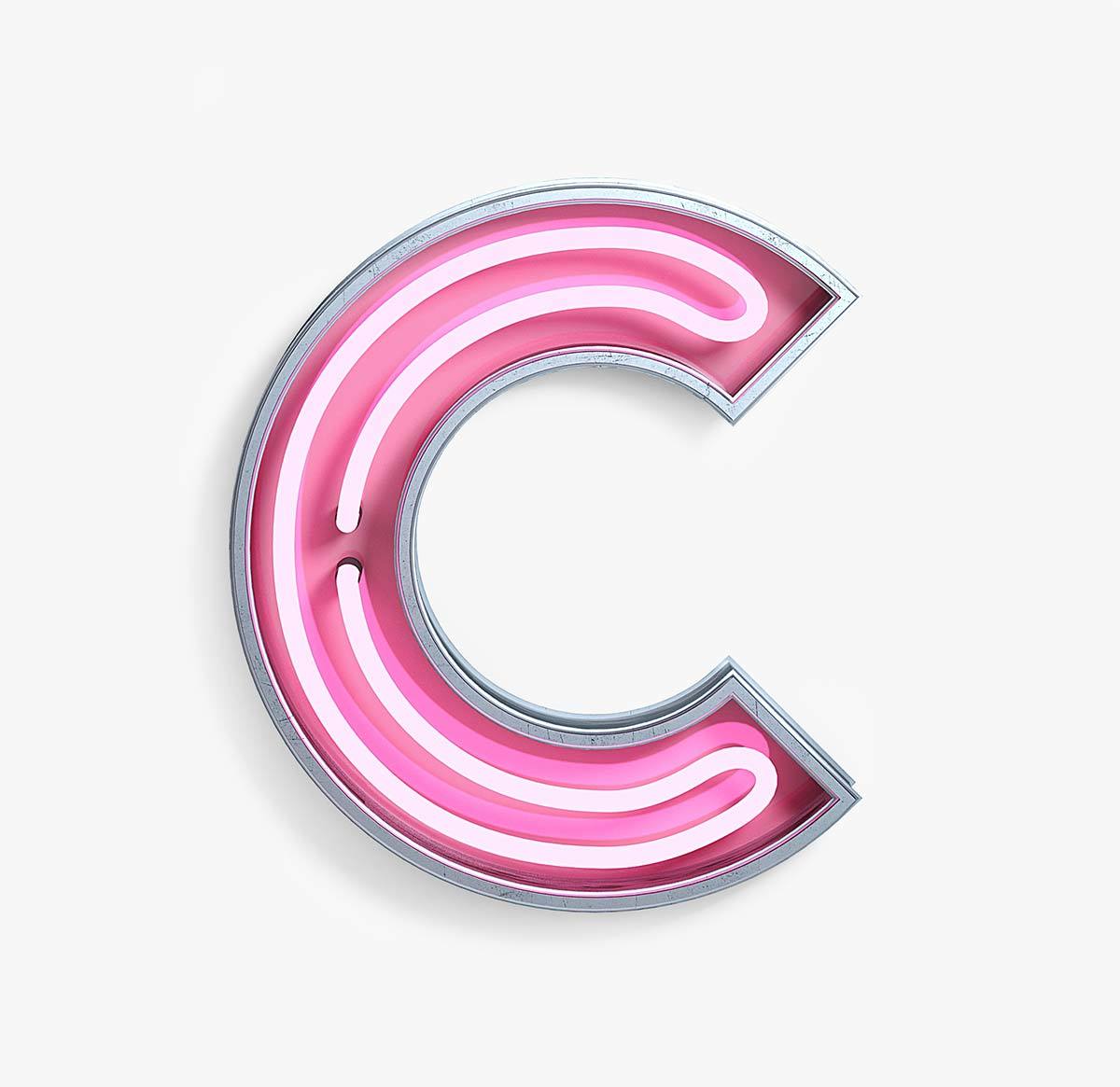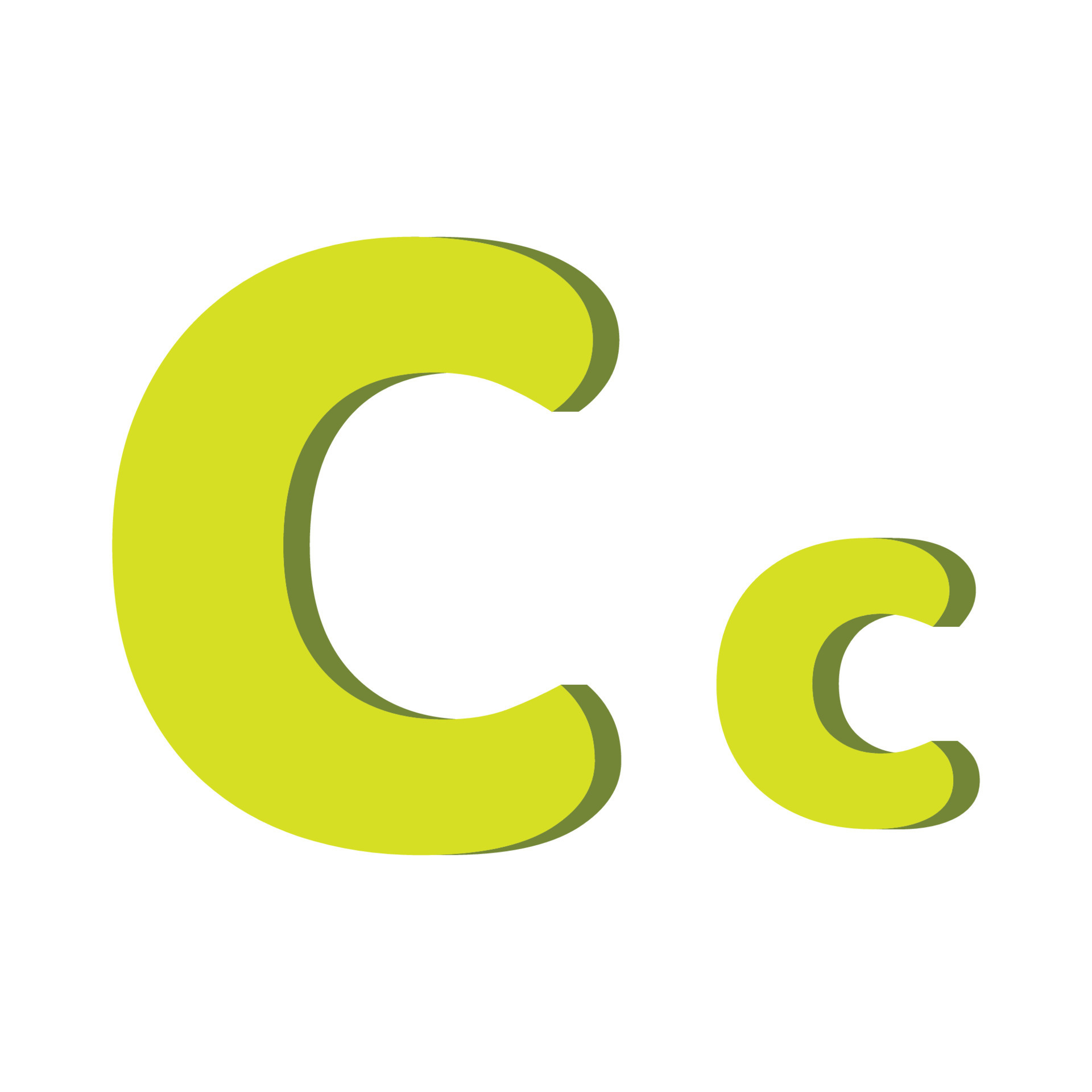C Green - The Enduring Power Of A Core Language
Have you ever wondered about the building blocks of the digital world we live in, that is, the very foundations upon which so much of our technology stands? It's almost as if there's a quiet, powerful force working behind the scenes, shaping everything from your operating system to the smallest device. We're talking about a programming language that has truly stood the test of time, a language that, in a way, continues to influence how software gets made, even today. This enduring presence makes it a truly fascinating subject to explore, especially when thinking about its practical uses. So, let's take a closer look at what makes this language tick.
This particular language, often just called "C," has been around for quite a while, actually. It's a fundamental part of how computers understand what we want them to do. Think of it like a set of instructions that computers can follow very directly. It's a bit like giving someone a recipe where every step is clearly laid out, one after another, leading to a specific outcome. This approach makes it incredibly efficient, which is why it has been so widely adopted across different kinds of systems and machines.
It’s interesting, too, how something developed so long ago still holds such importance in our current tech landscape. From its beginnings, it was meant to be a tool that would allow programmers to get very close to the computer's core operations, letting them tell the machine exactly what to do with minimal fuss. This close relationship with the hardware is one of its signature characteristics, making it a go-to for tasks where performance really matters.
Table of Contents
- The C Green Story - Where It All Began
- What Makes C Tick? A Look at Its Core Ideas
- How Does C Green Code Get Ready to Run?
- Operators and Their Role in C Green Programs
- Useful C Green Concepts for Programmers
- C Green Compared - How It Stands Against Others
- The Name's The Thing - Why "C"?
- The Rules of the Road - C Green Syntax
The C Green Story - Where It All Began
The story of the C programming language is a rather interesting one, going back to the early 1970s. This is when a couple of bright minds, Ken Thompson and Dennis Ritchie, who were working at Bell Labs, started putting it together. They were, in fact, looking for a better way to do things with the Unix operating system. Unix, at that time, needed some improvements, and they saw an opportunity to create a new tool that would make that possible. So, you see, the language didn't just appear out of thin air; it had a very practical purpose right from the start. This makes the C green origins quite compelling, as it was born out of a real-world need to make computer systems work more effectively.
Before C came along, there was another language, simply called 'B'. The creators of C built upon the ideas from 'B', taking what worked well and adding new features and capabilities. It's like they refined an earlier design, making it more powerful and more useful for a wider range of tasks. This connection to its predecessor is actually why it got the name 'C' – because it was the next step, the successor to 'B'. This progression shows a clear line of thought in how these programming tools came into being, always striving for better ways to instruct machines. It's pretty cool, really, how one idea often leads to the next in the world of computer science, and the journey of C green is a good example of that.
What Makes C Tick? A Look at Its Core Ideas
When we talk about C, we're discussing a kind of programming tool that operates in a very specific way. It's what you might call an "imperative" language, which means you give the computer a list of clear, step-by-step instructions to follow, almost like a recipe. You tell it exactly what to do, and in what order. Then, there's the "procedural" part, meaning it organizes these instructions into blocks, or routines, that you can call upon whenever you need them. So, you might have a routine for adding numbers, and another for displaying text, and you just call those routines as your program moves along. It’s pretty straightforward in that regard, you know, just telling the machine what to do, one thing after another.
This language also gives a lot of support to what's known as "structured programming." This idea is all about making your code easy to read and understand, with clear paths for how the program flows. It means avoiding messy jumps in your code that can make it hard to follow what's happening. Instead, you use things like loops and conditional statements that keep the program's logic neat and tidy. This structure is a big part of what makes working with C green code manageable, especially for larger projects, as it promotes a way of writing that's both clear and organized. It's actually a very thoughtful approach to building software.
Another interesting feature C offers is "lexical variable scope." This simply means that where you define a variable in your code determines where that variable can be seen and used. If you declare a variable inside a specific block of code, it generally only exists and can be accessed within that block. This helps keep things organized and prevents different parts of your program from accidentally interfering with each other's data. It's a way of keeping things contained, so to speak, which is quite helpful for keeping your C green projects running smoothly. So, you know, it helps avoid confusion about what data is available where.
C also has the ability to handle "recursion." This is a rather clever concept where a function, or a routine, calls itself to solve a problem. Think of it like breaking down a big task into smaller, identical versions of the same task until you reach a simple base case. It’s a powerful way to tackle certain kinds of problems, especially those that naturally repeat patterns. While it can seem a little tricky at first, it's a very elegant solution for some programming challenges, and it's something C green developers often use when the situation calls for it. It's a good tool to have in your programming toolbox, really.
Finally, C uses what's called a "static type system." What this means is that when you write your code, you have to tell the computer what kind of data each variable will hold – whether it's a whole number, a number with a decimal point, a character, and so on. The computer then checks these types before your program even starts to run. This helps catch many common mistakes early on, before they can cause problems when the program is actually in use. It's a bit like having a helpful assistant check your ingredients before you start cooking, making sure everything is in its right place for your C green application. This upfront checking can save a lot of headaches later on, honestly.
How Does C Green Code Get Ready to Run?
When you write a program in C, it's not immediately ready for your computer to understand and execute. Computers, you see, speak in a very different language than the one we write our programs in. They prefer instructions that are much closer to their own internal workings. This is where the process of "compilation" comes into play. The C language was, in fact, specifically designed with this compilation process in mind, with the goal of creating programs that could run with very little extra work or overhead. It's a fundamental step for any C green project to become a working piece of software, and it's quite an important one.
So, what exactly happens during this compilation? Well, a special program called a "compiler" takes your C code, which is written in a human-readable form, and translates it into something the computer's processor can directly understand. This translated version is often called "machine code" or "object code." It's a bit like taking a recipe written in English and translating it into a set of precise, machine-specific instructions for a robot chef. The compiler's job is to make sure your C green program is as efficient as possible when it finally runs, making it a very powerful and direct way to communicate with your machine. It's really about getting down to the bare metal, you know?
Beyond just the compiler, there's another important player in getting your C program ready: the "linker." After the compiler has done its work, you might have several pieces of object code, perhaps from different parts of your program or from ready-made libraries that your program uses. The linker's job is to take all these separate pieces and combine them into one complete, executable program. It resolves any connections between these pieces, making sure that when one part of your code needs to use something from another part, it knows exactly where to find it. This step is pretty vital for any C green application that has more than just a single, simple file, ensuring all the parts fit together perfectly.
And what about computer memory? When your C program runs, it needs a place to store its instructions and the data it's working with. This place is the computer's memory. The C language gives programmers a good amount of control over how memory is used, which is one reason why it's so efficient. You can decide how much space your program needs for different things, and you can even manage that space directly. This close interaction with memory is one of the things that sets C apart, allowing for very fine-tuned performance. It's something that C green developers often appreciate, as it gives them a lot of say in how their programs behave on a very low level.
Operators and Their Role in C Green Programs
In the world of programming, "operators" are like the action words that tell the computer to do something with your data. They are symbols or keywords that perform operations on values and variables. Think of them as the verbs in your code's sentences. For instance, you have operators for adding numbers, subtracting them, comparing two values to see if they are the same, or assigning a value to a variable. These little symbols are quite essential for getting anything done in a program. They are the tools that allow your C green code to manipulate information and make decisions, which is pretty much the core of any software.
The C language has a wide array of these operators, and many of them are also present in its close relative, C++. In fact, almost all the operators you find in C++ are also available in C, unless specifically noted otherwise. This shared set of tools means that if you learn the operators in C, you'll find a lot of familiar ground if you ever decide to explore C++. Sometimes, you might see tables that list these operators, and they might even have a special column just to show if a particular operator is specific to C or if it's found in both. Knowing these operators is a fundamental step in being able to write effective C green programs, allowing you to tell the computer precisely what actions to take.
Useful C Green Concepts for Programmers
For those who are moving beyond the very basics of C programming, there are many concepts that can be quite helpful. These are the ideas that build upon the foundational knowledge and allow you to write more complex and capable programs. Sometimes, seeing how these ideas are put into practice through small examples can make a big difference. I've actually put together some bits of code and explanations for a few of these intermediate C concepts, thinking they might be of good use to someone learning the ropes. They are designed to show how different parts of the language can work together to achieve specific outcomes, making your C green projects more sophisticated.
For example, some educational materials, like a particular reader for a computer science course (perhaps called 'CS107 reader'), often include a primer on C. This primer isn't just about the very first steps; it also touches on many other useful ideas that help solidify your understanding of the language. These resources are invaluable because they often present concepts in a way that connects them to real-world programming tasks. So, if you're looking to deepen your skills, exploring such materials can provide a lot of insight into how C green solutions are built. It's really about getting a fuller picture of what the language can do.
C Green Compared - How It Stands Against Others
The C language has truly been a programming staple for many decades, which is a pretty impressive feat in the fast-paced world of technology. It's like a reliable old friend that just keeps on working. But how does it stack up against some of the other popular programming languages out there today? When you look at C++, Java, C#, Go, Rust, Python, and even the newer arrival, Carbon, C holds its own in particular areas. Each language has its own strengths and weaknesses, and C is no exception. It's interesting to see where C green fits into this broader landscape of tools, and what makes it a choice for certain kinds of work.
For instance, C is often chosen when performance is a very important consideration, or when you need to interact very closely with the computer's hardware. Languages like Python, while very easy to learn and quick for development, might not offer the same level of fine-grained control or raw speed that C can provide. On the other hand, languages like Java and C# are often favored for building large business applications because of their features that help manage complexity. C++ is, of course, a direct descendant of C, adding object-oriented capabilities while retaining much of C's speed. So, when considering a C green approach, you're often thinking about efficiency and direct machine interaction, which is where C really shines compared to many others.
The Name's The Thing - Why "C"?
You might wonder why this powerful language is simply called "C." It's actually a pretty straightforward reason, as a matter of fact. The language was given the name 'C' because it came right after another language that was simply called 'B'. So, it was the next logical step in the sequence, just like 'C' follows 'B' in the alphabet. It's a simple naming convention, but it tells you a little bit about its history and how it evolved from earlier efforts in computer programming. This little piece of trivia about the C green name is something many programmers find rather neat.
This language, C, or sometimes written with a lowercase 'c', is truly one of the most widely used computer programming languages that has ever existed. Its enduring popularity speaks volumes about its utility and versatility. It's not just a tool for specific tasks; it's a fundamental language that has influenced countless other programming tools and systems. Its widespread adoption means that a huge amount of the software we use every day, from operating systems to embedded devices, has some connection to C. This makes C green not just a concept, but a pervasive reality in the digital world around us.
The Rules of the Road - C Green Syntax
Every language, whether it's a human language or a computer language, has its own set of rules for how you put words together to make sense. In programming, these rules are called "syntax." The syntax of the C programming language is simply the collection of rules that tell you how to write software in C so that the compiler can understand it. It dictates things like where semicolons go, how you declare variables, and how you structure your loops and functions. Following these rules is absolutely necessary for your program to work correctly. It's like the grammar for your C green code, making sure everything is in its proper place.
One of the interesting things about C's syntax is that it was designed to allow for programs that are very concise, or "terse." This means you can often express a lot of meaning with relatively few lines of code. This conciseness is partly what gives C its reputation for being a powerful language, allowing programmers to write efficient code without a lot of extra fluff. It also means that C code often has a very close connection with the underlying computer hardware. The way you write C green programs allows you to get very near to the machine's operations, giving you a good amount of control over how things happen at a very fundamental level. It's quite direct, honestly, in how it lets you speak to the computer.

C

English letter C for kids. 3d letter.Capital C,small c 22600824 Vector

letter C | Leo Reynolds | Flickr